Fore, located in County Westmeath, was an early Christian settlement that was converted by the Anglo-Normans into a walled town with an important Benedictine priory. Its name comes from the Irish "Fobhar" meaning spring. According to the legend, St. Feichin struck the base of the hill to the south with his staff and water began flowing from Lough Lene (the lake on the other side of the hill about a mile away), underneath the hill, to the spot where he had built a mill.
Saint Fechin or Feichin (pronounced Fe-heen) was born between 580 and 590, ordained in 610, and died around 665 during an epidemic of yellow plague. Shrouded in folklore and pagan mythology, the details of his life are not entirely clear, yet the numerous buildings and villages that carry his name indicate his immense activity in the spreading of the Irish monastic tradition during the age of Celtic Christianity. Stories abound of his supernatural powers and healing abilities... as well as miracles, such as the Seven Wonders of Fore, found here.

An overview of the Seven Wonders of Fore
1 - The monastery built upon the bog
2 - The mill without a race
3 - The water that flows uphill
4 - The tree that that won’t burn (Tobernacogany)
5 - The water that doesn’t boil (Doaghfeighin)
6 - The anchorite in a stone
7 - The lintel stone raised by St. Fechin’s prayers
Our first stop, directly next to the parking lot, was Miracle #4... The Tree that Won’t Burn. Also known as The Tree with Three Branches, this ash tree sprouts from the Tobernacogany holy well. In the old days, pilgrims used to drive copper coins edgeways into its bark. Over time, this seriously injured the tree so that today only a single branch survives... now decorated with colorful rags and personal items instead. It is said the wood from the tree will not burn, and once when a man chopped off a branch for firewood, he was found dead the next day. This is also one of the two wells where water taken from it will never boil. It is said to cure headaches and toothaches.

Approaching the ash tree
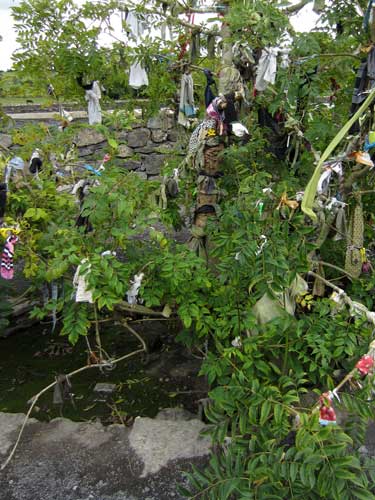
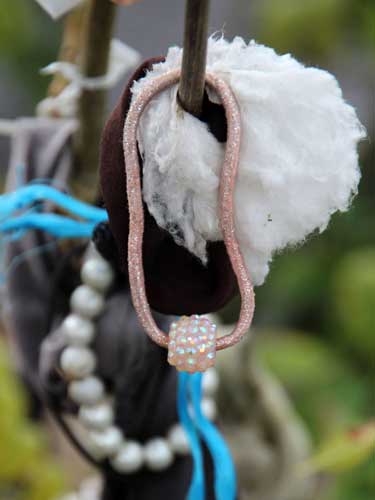
Tthe holy well below ... and some decorations
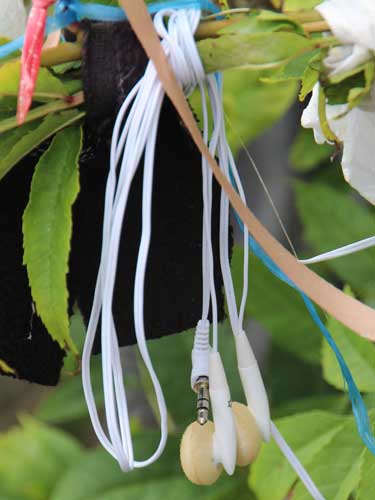

A set of headphones ... and a colorful ornament
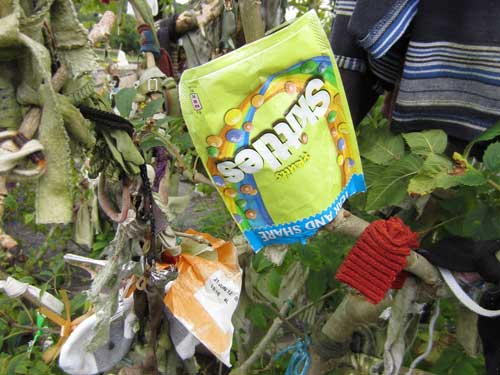
This seems more like trash than something highly personal though!
We then followed the main path which led past Miracles #5, #2 and #3.
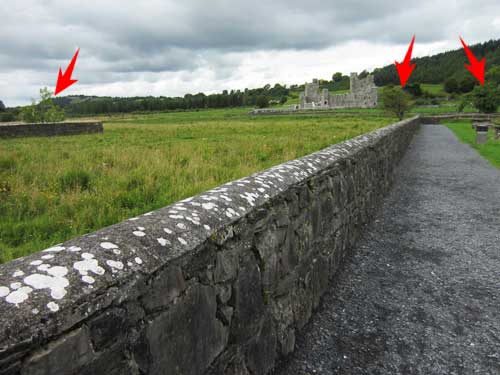
Tobernacogany holy well (left), Doaghfeighin (middle) and site of old mill (right)
#5... The Water that Doesn't Boil. Similar to the previous well, the water from Doaghfeighin (meaning St Feichin's vat or bath) is said not to boil, and those foolish enough to try were befallen with dire misfortunes. Here is where the saint knelt and prayed while immersed in the cold water. Sick children were later dunked here in hopes of being cured. The well is now dry but a large ash grows. This may have been an early megalithic tomb.

#2, The Mill Without a Race (which is a narrow channel or spillway) and #3, The Water that Flows Uphill. It is said that St. Feichin built a mill here, where there was no water, neither river nor stream. After it was completed, the saint thrust his staff into the ground and water flowed forth (apparently going uphill), quickly growing into a torrent sufficient to operate the mill. The mill was used until 1875 when it was replaced, and the pond is now mostly silted up, although the springs that once filled it still bubble up nearby.
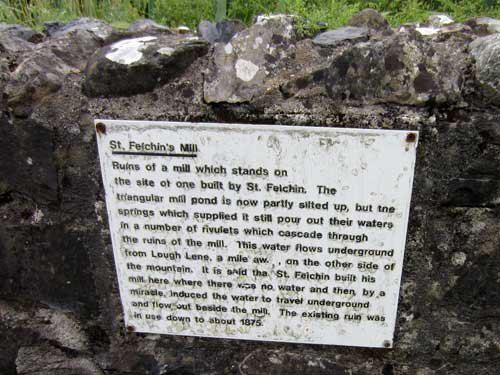
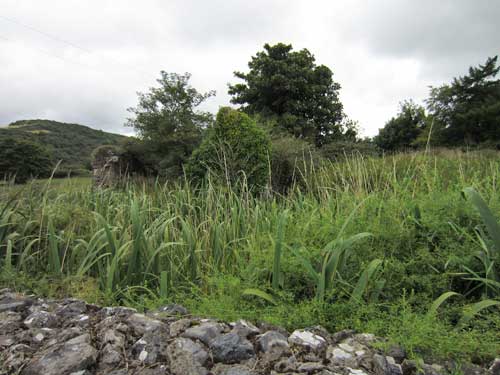
Overgrown ruins of the old mill
Around the year 630, St Feichin went to Fore where he founded a Benedictine monastery and built a church and religious school. By the time the plague hit in the 660's, it is believed there were as many as 300 monks and 2,000 students in residence. St Feichin was very strict regarding austere living conditions, prayers, meditation, fasting and penances, including standing in cold water holding a stone to prevent sleep.
#1.... The Monastery Built upon the Bog. The original site was located above the valley and burned at least 12 times between the years of 771 and 1169 by pillaging invaders, including local Gaelic clans as well a the prominent Viking chief named Turgesius. Then around 1180, Hugh de Lacy, the Lord of Meath and a Norman landlord, built a Benedictine priory (the remains of the 15th century version of which we see today) on the valley floor... which was a boggy area as a result of the springs. And yet it miraculously didn't sink.

An aerial view of the ruins
Dedicated to both St Feichin and St Taurin from Evreux (an abbot in Normandy, France, who died around 410), it is the only medieval Benedictine site remaining in Ireland. These French monks were the largest group of Benedictines to have travelled to and then remained in Ireland. Because of its relationship with a French abbey, Fore was regularly seized by English authorities as "alien property" when England was at war with France.
After Henry VIII’s 1531 reformation laws and the subsequent 1536 acts dissolving monasteries, the last prior ,William Nugent, surrendered the abbey in 1539. In 1588, the abbey lands were granted to Christopher Baron Delvin, known locally as The Black Baron. The baron’s soldiers ransacked and torched the buildings after taking anything of value... leaving it to ruin.
In this case, Fore Abbey was a Benedictine priory where monks lived (monastery) and dedicated their lives to religious vows. It included a church, reserved for prayer not residence.

Approaching the ruins from the south side with the gate house to the east (far right)
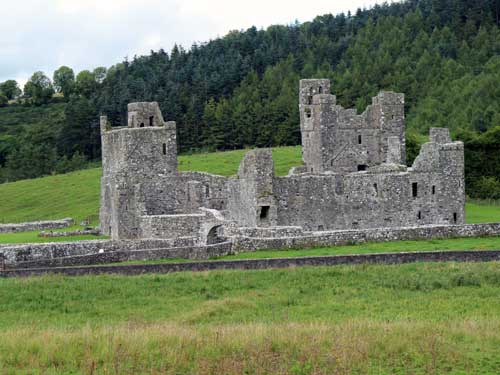
Fortified west tower (left) and the chapter room (right)
Like the previous Irish monastery, it too suffered from plundering attacks during warring medieval times and was therefore more fortified. The priory was built around a cloister and courtyard. The west tower was more for defense (indicated by arrow slits and a 'murder hole' above the gateway from which the defenders could drop rocks or boiling oil) while the other one was more for residential life. The surrounding domestic buildings have been altered over the years.
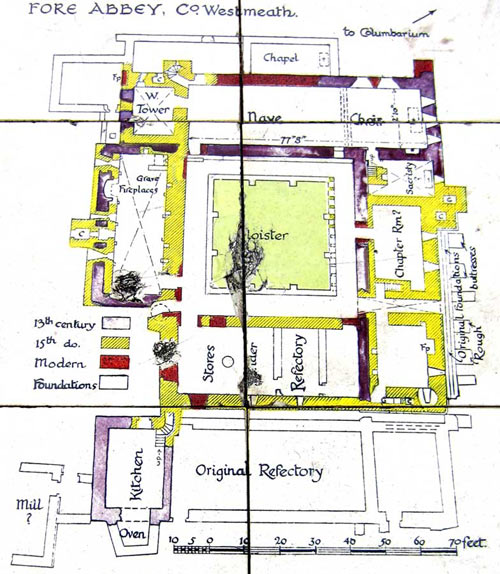
Priory layout
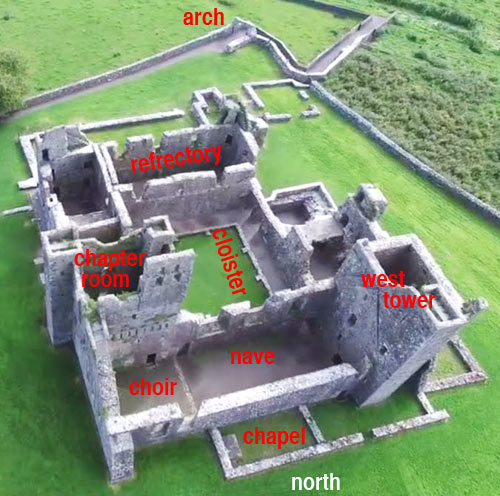
Another aerial view with the rooms labelled (unfortunately upside-down from the map above)
More handy definitions
Chapel - a small, private place of prayer or worship; dependent on the church
Chapter room - used for meetings
Choir - the part of a church between the altar and the nave, used by the choir and clergy
Cloister - a covered walk in a abbey, college or cathedral, typically with a wall on one side and a colonnade open to a courtyard on the other
Refectory - a dining room
Nave - the central part of a church, intended for the congregation
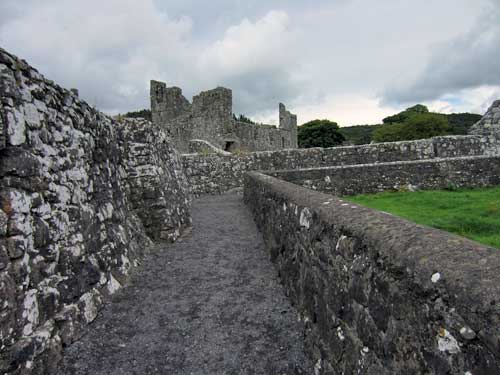
The walled path in

The archway over the southern entrance
We crossed the south side and entered into a doorway on the east side.
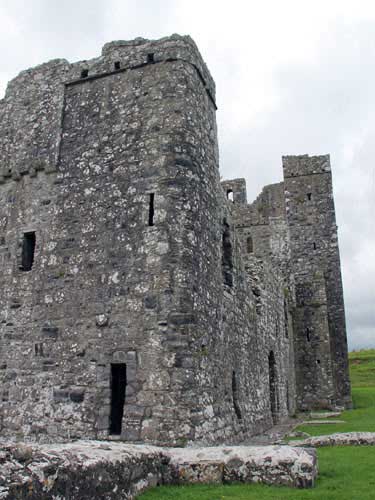
The east side
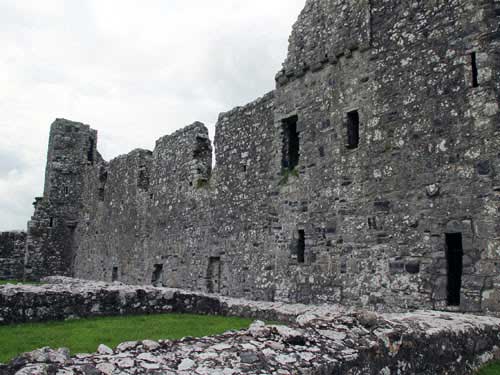
View back along the south side
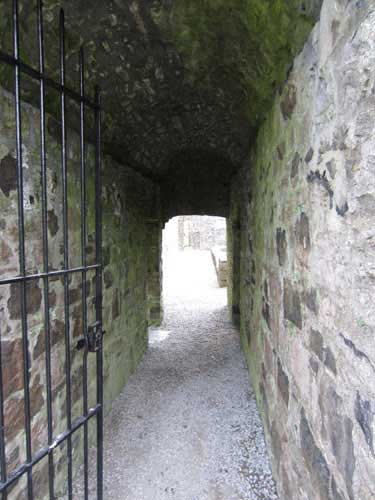
Entering the priory
A set of stairs in the wall led us up to a window looking east (toward the gate house) and gave us a glimpse of the corner rooms. There were many stairways thoughout the priory leading up to the various towers, but most of them were gated off.

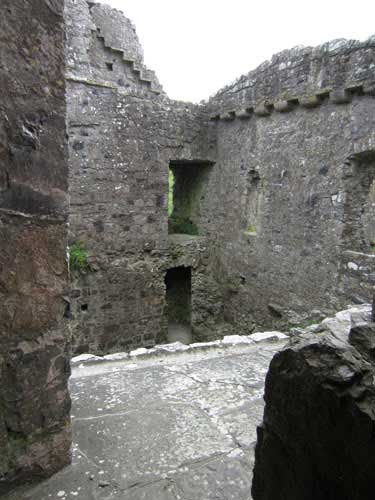
The outer wall of the chapter room .... and inside the southeast corner room (with the refrectory on the other side of the wall to the right)
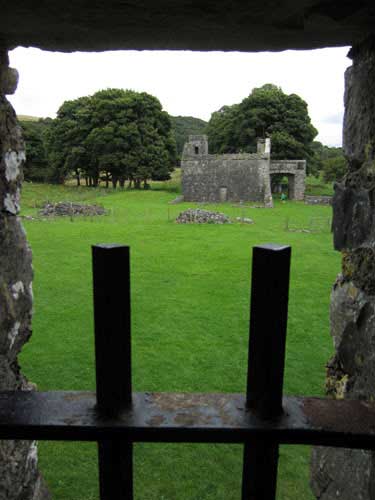
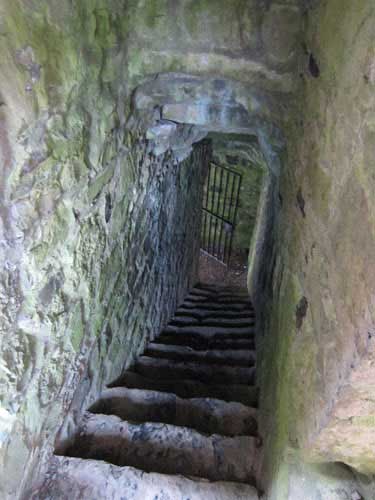
The gate house ... the stairs
We entered into the cloister. This central courtyard was originally built around 1200. The surrounding towers appeared in the 15th century, when the priory buildings were incorporated into the town's fortifications.

The cloister with the west tower in the background
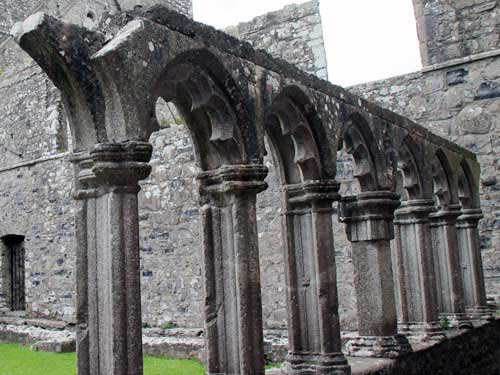
A piece of the colonnade
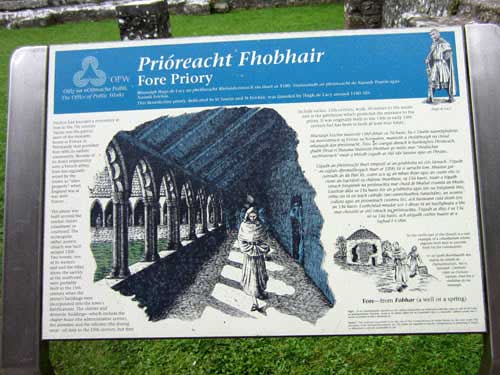
A sign in both English...

... and Gaelic. Some words were familiar: the saints Feichin and Taurin of Evreax, Normainn (Normandy), Fhobhair (Fore)... um yeah, that's about it!
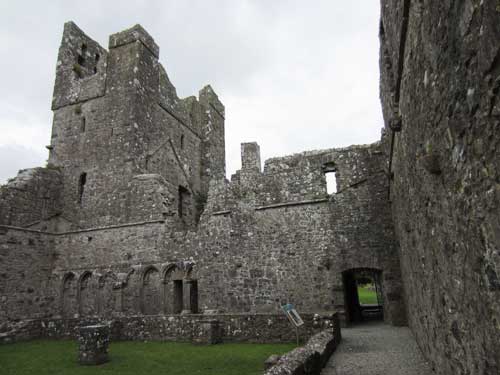
A different view of the colonnade, this time with the tall tower containing the chapter room
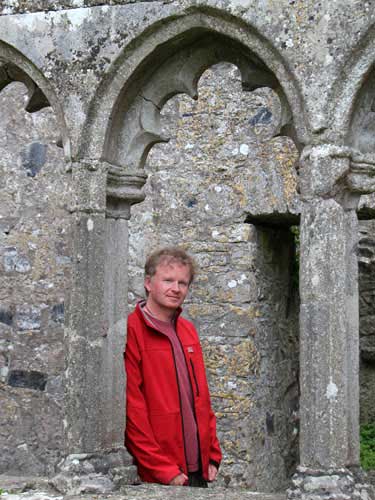
Regan for scale (and a lovely splash of color!)
We wandered into the nave and the choir on the northeast corner.
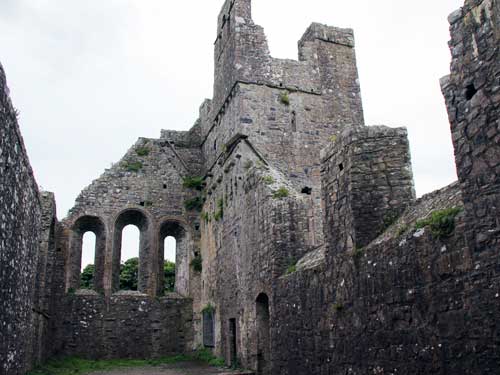
Standing in the nave, looking toward the choir (with the chapter room tower on the right)
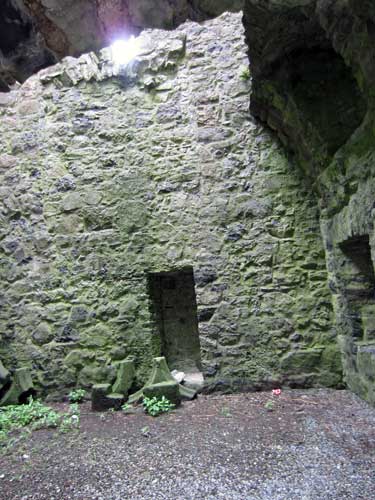
A peek into the neighboring chapter room
We cut back over to the west side and entered another large room.
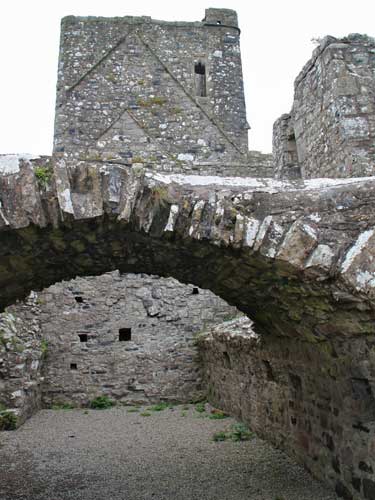

The remains of an arch (perhaps a ceiling once?) with the west tower in the background ... and evidence of a fireplace
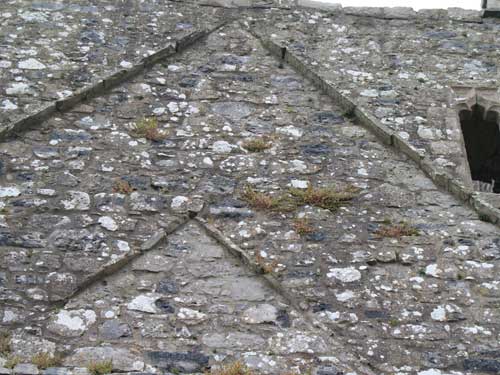
Distinctive markings on the west tower... perhaps an indication of former structures?
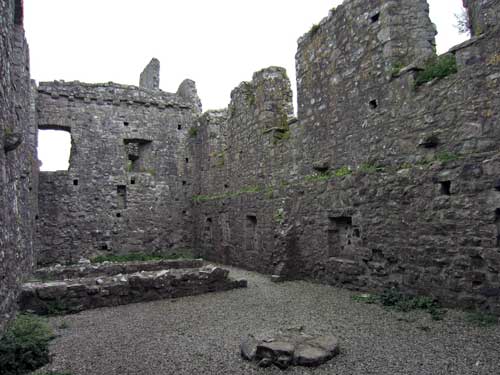
The refrectory
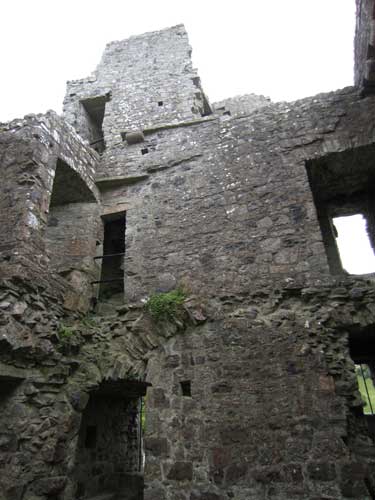
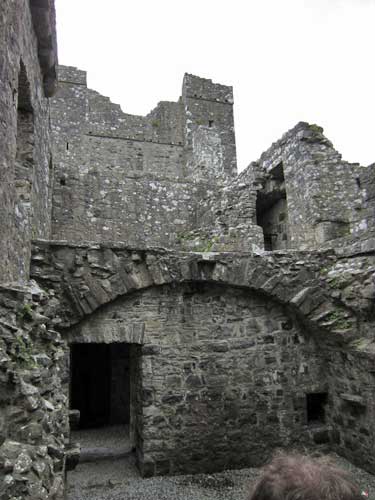
The room in the southeast corner that we look down on from above upon our entry

